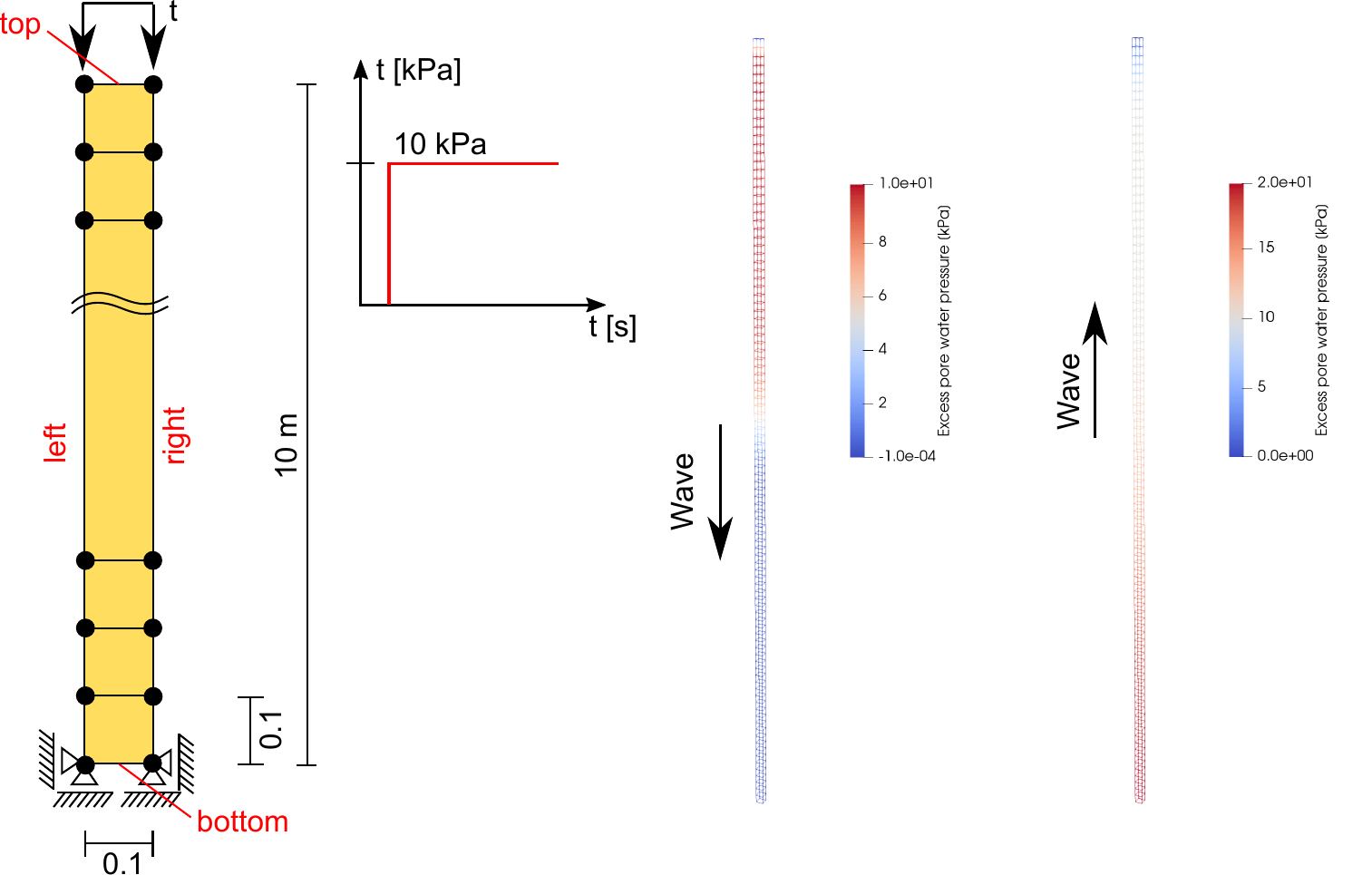1D Compression wave propagation
In the following, the compression wave propagation in a water-saturated soil column is studied using the various finite element formulations available in numgeo. The soil column of 10 m height is composed of 100 elements with dimensions 0.1 m \(\times\) 0.1 m (\(\times\) 0.1 m for 3D simulations). The soil within the column is elastic. All elements are given the same elastic parameters (\(E\) = 10,000 kPa, \(\nu\) = 0.3). At the top of the column a Heaviside load is applied which leads to the propagation of a compression wave.
 Finite element model and loading for the heaviside loaded soil column.
Finite element model and loading for the heaviside loaded soil column.
Input files
The input files for the benchmark simulations can be downloaded here.
Simulation results
An analytical solution for the wave-propagation has been presented in [1], which is used as reference solution for the example.
The naming convention of the different element formulations used is as follows: the number after u indicates the number of nodes discretising the solid displacements, the number after p indicates the number of nodes discretising the pore water pressure and the number after (capital) U indicates the number of nodes discretising the water displacements. -sat indicates that the element assumes fully saturated conditions and -red that the element uses a reduced integration scheme.
The results in terms of excess pore water pressure at the bottom of the column and settlement of the column evaluated at its top are given in comparison with the results of the analytical approach. As a result of the frequency of approximately 30 Hz of the propagating wave as well as the relatively high hydraulic conductivity (\(k^w=10^{-3}\) m/s), the u-p elements show an increasing divergence from the analytical results with ongoing wave propagation. The elements based on the u-p-U- and u-U- element formulation fit well to the analytical results for the entire time period. The relative acceleration is therefore important to be taken into account. Even the linear-interpolated u-U- elements (u4u4, u4u4-red, u8u8-3D-red) are in good accordance with the analytical results despite the lower number of nodes and integration points (the same number of elements has been used for all simulations). The reduced integrated u4u4-red element performs slightly better than the fully integrated u4u4 element which can be traced back to volumetric locking effects for the fully integrated element.

References
[1] P. Staubach, J. Machaček: Influence of relative acceleration in saturated sand - Analytical approach and simulation of vibratory pile driving tests. Computers and Geotechnics, Volume 112, 2019, Pages 173-184, ISSN 0266-352X, doi.org/10.1016/j.compgeo.2019.03.027